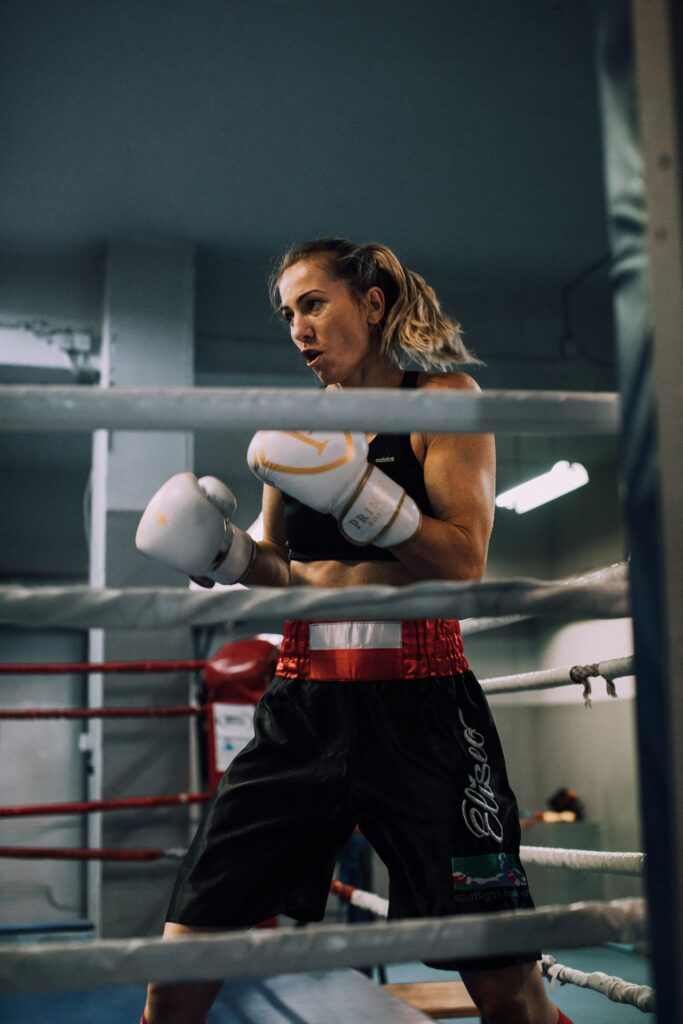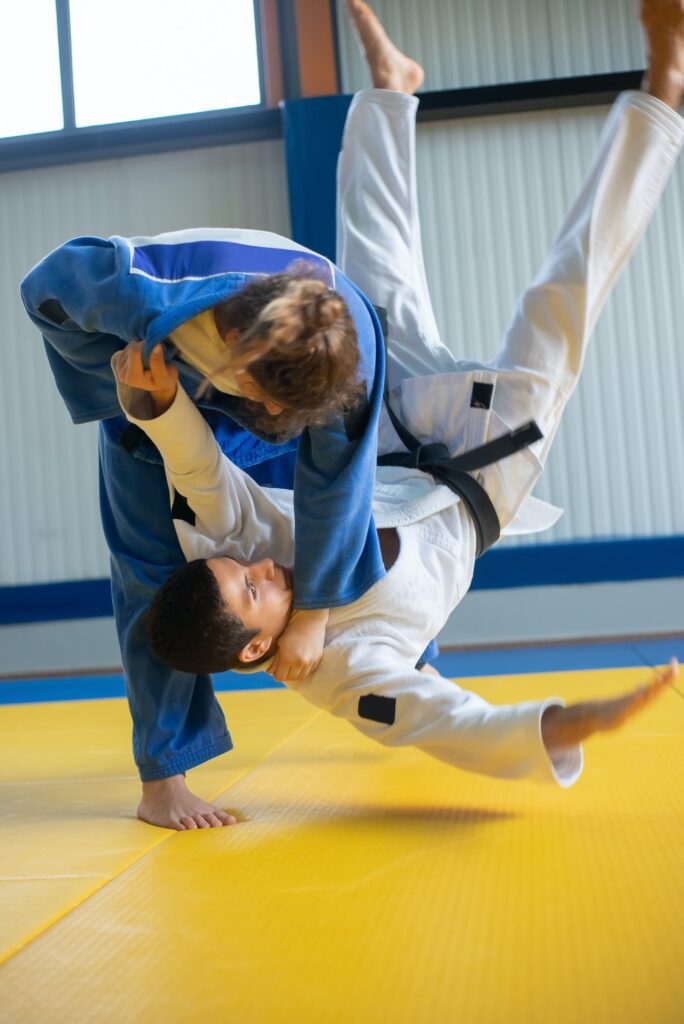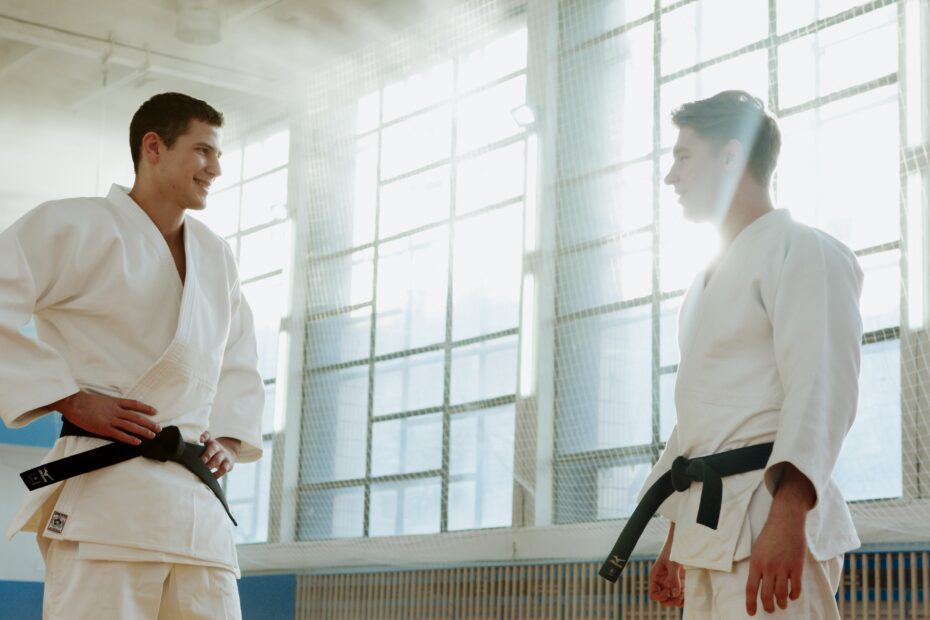Boxing and judo are two combat sports with international notoriety. Despite having different origins, both boxing and judo are considered highly effective martial arts. These two fighting styles can be used in self-defense situations but are also unique in their own ways. To help you gain a better understanding of what makes boxing different from judo, we will cover the beginnings of each combat sport and key differentiators like equipment used.
Key differences between judo and boxing
- Boxing ruleset does not allow any throws or takedowns
- Judo ruleset does not allow punches
- Judo players wear a gi with a belt
- Boxers wear boxing shorts, boxing shoes, gloves, mouthguard, cup, and headgear
The history of boxing

Boxing is one of the oldest sports in the world and some say it’s been around earlier than 688 BC. While there are different variations of boxing today (i.e. bareknuckle boxing), we’re focusing on Western boxing where an emphasis is placed on punching with no kicks, head butts, knees, or elbows.
Striking as an expression of aggression has been around for humans from the beginning. Boxing is today’s continuation of this but with clear rules and objectives. There’s proof of different forms of boxing all around the world from India to ancient Greece. Today, boxing is one of the most popular combat sports in the world with fighters of international fame such as:
- Tyson Fury
- Laila Ali
- Anthony Joshua
- Claressa Shields
- Muhammad Ali
- Floyd Mayweather
- Manny Pacquiao
- Holly Holm
- Mike Tyson
While not all of the boxers above are still active, their impact on the sport and the world is still being felt today thanks to the global reach of boxing.
The history of judo

Judo‘s roots go back to Japan, the land of the rising sun, and Kano Jigoro. Judo is a grappling system that can be applied in both in sport situations such as MMA , judo, and BJJ while being highly effective in self-defense scenarios.
Kano Jigoro is someone many credit with the creation of judo. Jigoro’s background started off in jujutsu. After studying jujutsu, he took the aspects of jujutsu he thought were most effective and combined them which led to the development of judo as we know it in 1882. Jigoro worked for many years to spread judo around the world. Although he didn’t live long enough to see it happen, his hard work eventually paid off in getting judo into the Tokyo Olympics in 1964.
Judo has since grown to becoming a martial art practiced around the world with judokas coming from countries like France, Russia, Brazil, and Cameroon.
Like boxing, judo has it’s own set of notable fighters like:
- Ronda Rousey
- Teddy Riner
- Kayla Harrison
- Satoshi Ishii
- Ryoko Tani
- Wim Ruska
Some of the judoka listed above have also found success in other combat sports such as MMA like Ronda Rousey and Kayla Harrison. Their abilities to pursue takedowns and defend takedowns have helped them have a strong foundation to build on for their fighting careers.
Key differences between judo and boxing
As you’ll learn, there are many key differences between the boxing and judo. In this section, we’ll cover some of the most important details that set the sports apart from each other such as gear/equipment used.
What happens when a fighter goes to the ground in judo or boxing?
Although both judo and boxing start the fight on the feet, the fight can continue on the ground for judo matches. A boxing match either pauses or ends when a fighter hits the canvas.
Do judokas and boxers use the same equipment?
The short answer is no. Judo practitioners wear gis and their appropriate belt rank. They can wear a mouthguard if they want to but are not required to use one. Boxers wear shorts (and a tank top for women), boxing shoes, headgear for amateurs, groin protection, gloves, and a mouthguard.
Strikes are not allowed in judo competition
Unlike boxing, strikes are not allowed in judo competition. Judo competitors are allow to throw each other and have opportunities to pursue submissions on the ground but can’t throw punches.
Boxers can’t grab the clothing of their opponents
While judokas fight for grips to gain an advantage over their opponent, boxers cannot grab each other’s clothing. They can clinch but cannot hold their opponent in the same way a judo fighter would.
Go train!

Now that you have a better idea of the main differences between judo and boxing, it’s time to start training! You can find martial arts gyms near you with a quick search on Google Maps. We recommend trying out at least 2-3 different gyms to get a feel for their teaching style and environment. Every gym has a different focus and training style so it’s in your interest to find one that works best for you!

Pingback: BJJ vs. Judo: What's the difference? - Combat Athlete Gear